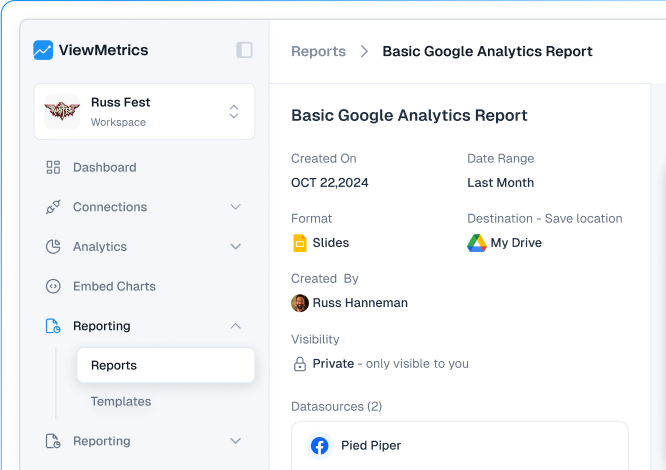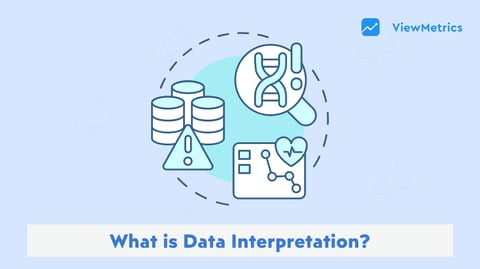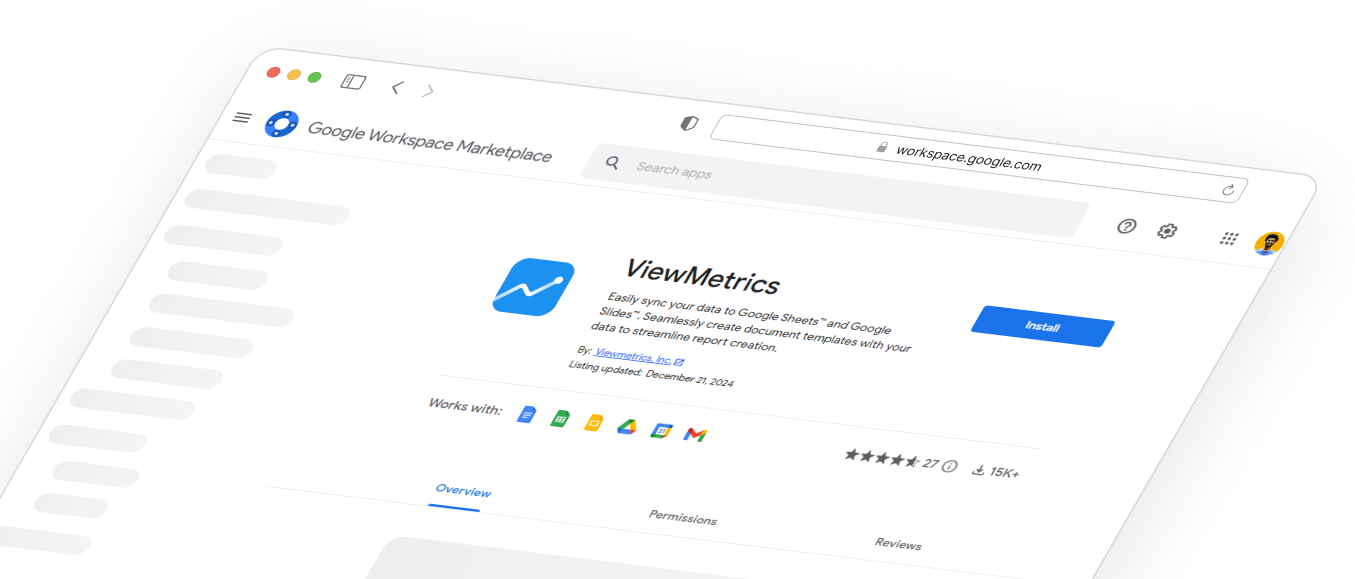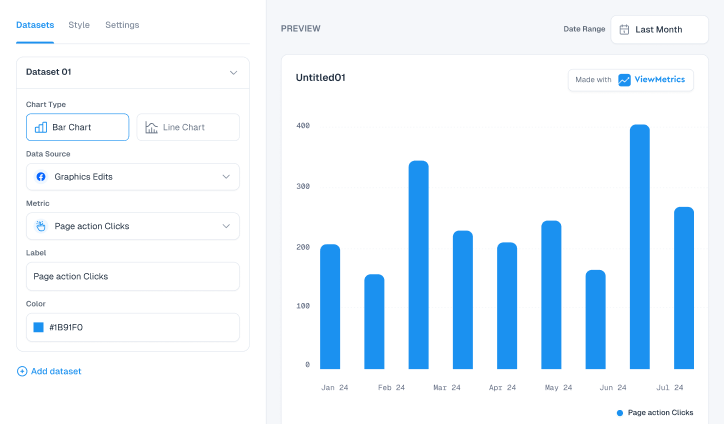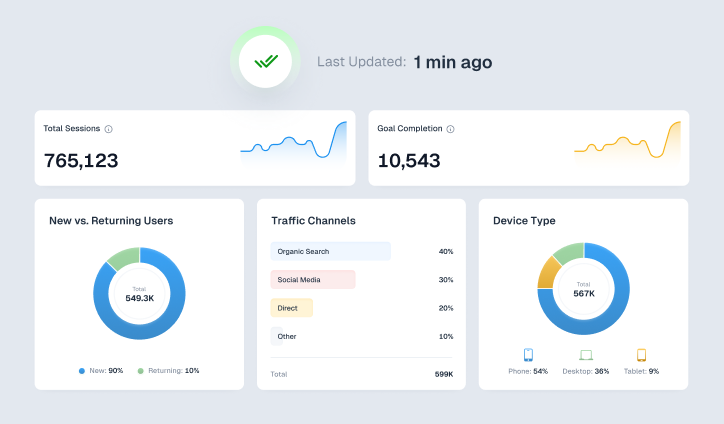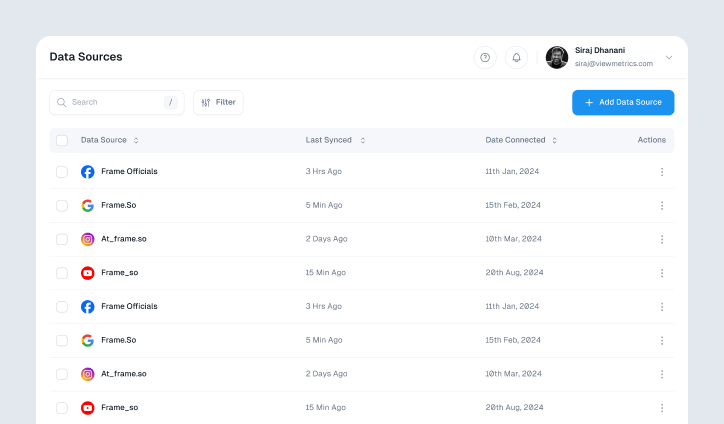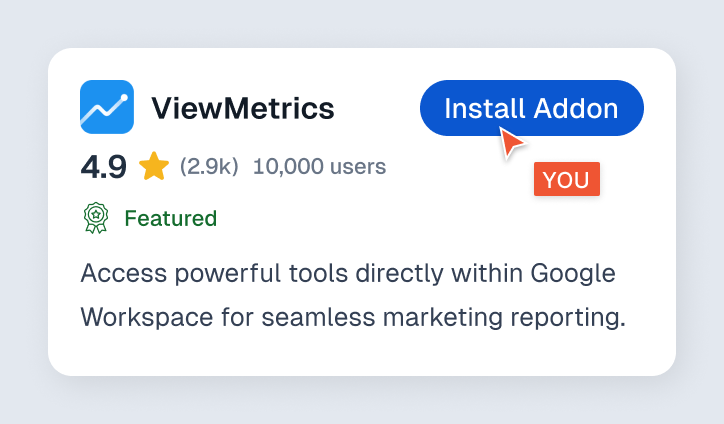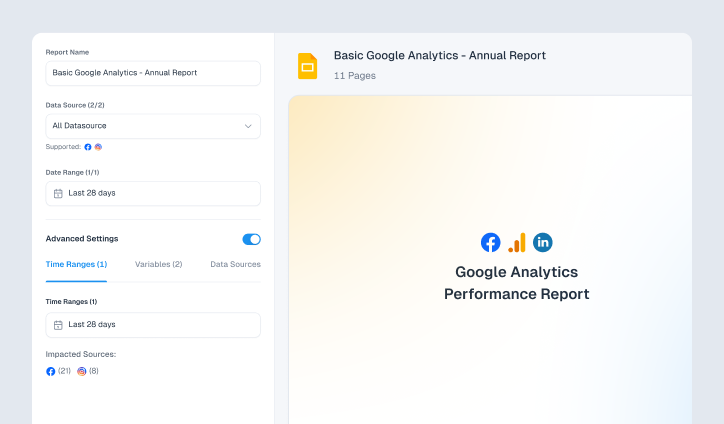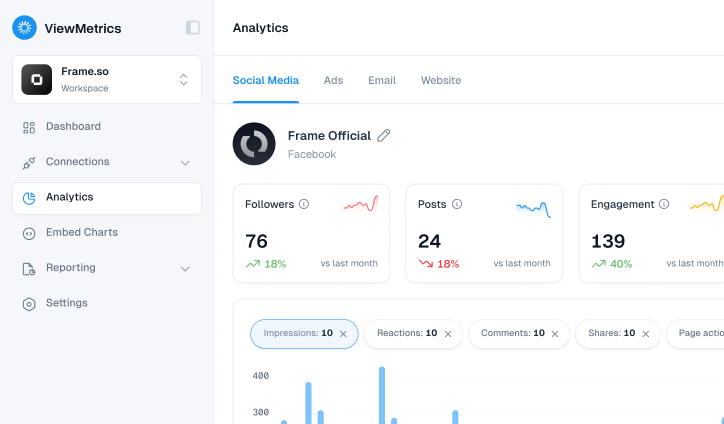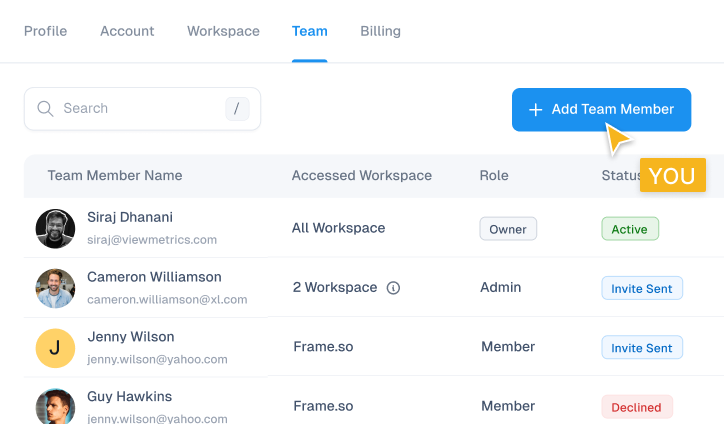Summary for the Blog
- What it is: Machine learning, a part of AI, uses advanced math to analyze past data and predict future outcomes and trends.
- How it’s used: ML automates repetitive tasks and helps businesses make smarter decisions by analyzing user data for valuable insights.
- Key applications: ML in marketing can be applied for tasks like prediction churning (predicting and preventing customer loss), customer segmentation (dividing audiences for targeted campaigns), lead scoring (identifying high-potential leads), and ad optimization (finding the most effective channels).
- Benefits: ML offers a more dynamic, scalable, and automated approach to data analysis compared to traditional marketing analytics, providing predictive and prescriptive insights.
What if you could automate the repetitive and time-consuming tasks in your marketing process? With AI, that’s now a reality.
Machine learning has already transformed industries like banking and healthcare, and now it’s helping businesses of all sizes enhance their marketing efforts. We can turn user data into valuable insights, making smarter decisions in lead scoring, reducing churn, and much more.
However, many marketers still need to learn about how AI works or how to incorporate it into their strategies. To help you navigate this, we’ll explain what machine learning marketing is and explore some of the most common ways it boosts marketing success.
What is Machine Learning?
Machine learning, a field within artificial intelligence, focuses on predicting outcomes by analyzing past data patterns. It applies advanced mathematical formulas to pull out valuable insights from organized data, helping us anticipate future trends and behaviors.
How Do Machine Learning Algorithms Work in Marketing?
The process of using machine learning algorithms in marketing starts with data collection. This data collection includes website visits, customer interactions, social media engagement, and other factors.
After data collection, machine learning models are trained to work accordingly. These machine-learning models use techniques such as clustering, classification, and regression to discover any relationship between the patterns identified in the data.
For example, a machine learning model could reveal that customers who interact with specific types of content are more likely to purchase.
Once trained the Predictive Marketing model becomes a powerful tool for marketers, helping to predict customer behavior, group audiences, recommend products, and even automate campaigns. As fresh data rolls in, the model keeps learning and adjusting, ensuring that its insights stay current and valuable.
How to Use Machine Learning in Marketing?
Machine learning has a huge scope in making your marketing efforts soar. Here’s how you can use machine learning in marketing:

1. Prediction Churning
Understanding when and why your customers leave is a powerful advantage. It lets you step in early with solutions to keep them engaged. But if your predictions are off, there’s a risk that you might end up offering incentives to the wrong customers, losing out on both loyalty and revenue.
Machine learning can provide a clear, data-driven model highlighting which customers will most likely churn based on their behavior patterns. It can also pinpoint the factors behind their decisions, giving you insights to fine-tune your product or service and keep customer turnover low.
Also Read: Predictive Marketing: Definition, Benefits, and Challenges
2. Customer Segmentation
Prediction churning brings us to talk about the importance of machine learning in marketing for customer segmentation. With customer segmentation, you can divide your customers into different segments. These segments are based on your customer’s interests and behaviors.
By analyzing your customer’s data, machine learning can segment them into different groups that are divided by the fact that which group will more likely react positively to which marketing campaign.
Also Read: Customer Journey Analytics: All You Need To Know
3. Lead Scoring
Nobody wants to waste time chasing leads that just won’t convert. With the help of machine learning, it’s easier than ever to make sure your efforts are focused on the leads most likely to turn into actual sales. One of the most powerful tools for this is a propensity model, which ranks your leads by how likely they are to buy from you.
In the past, creating these models meant a lot of manual data crunching in spreadsheets. But with machine learning marketing, you can now build these models quickly and accurately, providing your sales team with real-time insights into which leads are most worth pursuing.
4. Fraud Detection
Fraud detection has become a crucial use of machine learning in digital marketing. With the ability to analyze data patterns and track user behavior, machine learning algorithms can spot and block fraudulent activities, such as click fraud and payment fraud, before they cause damage. This proactive approach helps keep digital marketing efforts secure and trustworthy.
5. Consumer Behavior Prediction
Machine learning empowers marketers with access to vast, real-time data sets that unlock valuable insights, like predicting consumer actions and assessing campaign performance.
By analyzing this in-depth data, you can craft more personalized marketing strategies, ensuring the highest return on investment. Not only does this data shed light on your customer’s preferences, but it also reveals the most effective channels for reaching and engaging them.
6. Ad Optimization
Machine learning marketing can unlock huge potential for marketers, enabling them to make smarter, data-driven decisions when optimizing campaigns. This can happen when ML in marketing analyzes existing data and machine learning models help pinpoint the most effective channels to connect with the target audience, ensuring maximum return on investment (ROI).
View All Your Marketing and Website Data — Instantly
Connect Instagram, Mailchimp, Google Analytics & more
Pre-built dashboards, no setup needed
Save hours on reporting every week
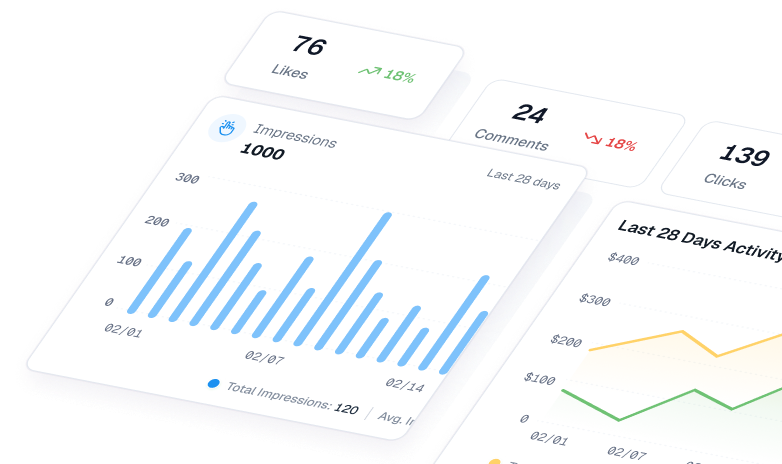
How to Measure the Effectiveness of Your Machine Learning Marketing Initiatives?
To better understand business performance, machine learning keeps an eye on several key metrics, such as:
- Conversion Rate: This tells you what percentage of your website visitors or leads are actually taking action, whether it’s making a purchase, subscribing to a newsletter, or completing any other desired activity.
- Customer Acquisition Cost (CAC): This metric calculates how much it costs to bring in a new customer. Comparing it with the customer’s lifetime value helps you gauge how efficient your marketing strategies really are. Also, read our blog on Cost per lead here.
- Return on Investment (ROI): ROI measures the profit you earn from your marketing efforts relative to your spending. It’s a simple yet powerful way to track the effectiveness of your campaigns.
- Customer Lifetime Value (CLTV): CLTV predicts the total revenue a customer will bring in throughout their entire relationship with your business, offering insights into the long-term impact of your marketing tactics.
- Attribution Modeling: This helps identify which marketing channels or strategies are driving the most conversions, giving you a clear view of what’s working best.
- A/B Testing: By testing different marketing approaches, you can fine-tune your strategy to find out what resonates most with your audience and brings the best results. Read more on Facebook A/B testing here!
Examples of Machine Learning in Marketing
Today, we will be discussing some classic examples of machine learning in marketing and how some of the most renowned businesses globally have been using this technology for better marketing efforts.
1. Predictive Analytics
Machine learning algorithms are game-changers for digital marketers, offering a way to tap into past data and predict what’s likely to happen next. This means you can craft targeted and personalized campaigns, making them much more relevant to your audience. By digging into historical data, you can uncover valuable trends and insights, fine-tune your strategies, and boost your chances of future success.
-
Netflix
A great example of predictive analytics in action is Netflix. The streaming giant uses machine learning to analyze user data, like viewing history and ratings, to predict which movies and TV shows a person is most likely to enjoy. This enables them to offer tailored recommendations, keeping users engaged and encouraging them to stick around longer.
-
Amazon
Amazon is another prime example of predictive analytics at work. By analyzing browsing and purchase history, Amazon’s machine learning algorithms identify trends and patterns in customer behavior. This helps the platform predict which products a customer is most likely to buy, allowing it to serve up personalized recommendations that are more likely to catch their interest.
2. Customer Segmentation
One way machine learning transforms digital marketing is through customer segmentation. It helps you break down your audience into distinct groups based on things like demographics or behaviors. Once you understand these traits, you can craft tailored campaigns for each group, ultimately boosting the impact and success of your efforts.
-
Spotify
A great example of a brand leveraging customer segmentation in its digital marketing is Spotify. Using machine learning algorithms, Spotify analyzes user data, such as listening history and playlists, to sort users into segments based on their unique music tastes. This approach enables them to offer personalized song recommendations and playlists, leading to higher engagement and a stronger sense of loyalty among its users.
-
Coca-Cola
Coca-Cola is another brand that effectively uses customer segmentation to tailor its marketing efforts. By applying machine learning algorithms, they analyze customer data from social media and other platforms to uncover patterns and insights. This helps them craft targeted campaigns for various age groups and demographics, ensuring each audience receives a more personalized and relevant message.
3. Content Optimization
Another example of machine learning in marketing is through content optimization. With content optimization, you can improve the effectiveness of your content through user preference and behavior. Machine learning can analyze user data, including social media activities and search history, to identify insights and patterns for maximum engagement with content optimization.
Also Read: Content Marketing Analytics
-
The New York Times
The New York Times leverages machine learning algorithms. They analyze user data, like reading habits and search history, to tailor the content displayed to each visitor. This personalized approach creates a more engaging experience for users, boosting engagement and encouraging them to return to the site.
-
Expedia
Expedia uses machine learning marketing through content optimization to personalize travel recommendations for each user on its platform. With this, they analyze data like search history and past bookings, allowing them to tailor suggestions that better align with each user’s unique preferences. This approach helps make recommendations more relevant and engaging, enhancing the user experience.
4. Email Marketing
Machine learning opens up new ways to tailor email campaigns uniquely to each customer by analyzing their actions, like what they’ve bought before or what they frequently browse. Using ML algorithms, marketers can fine-tune email strategies to boost engagement—making customers more likely to open, click through, and ultimately take action on emails based on Email Marketing best practices.
-
Spotify
Spotify leverages machine learning to craft email campaigns that feel personal and relevant to each user. By analyzing listening habits and other data, they generate custom playlists and recommendations tailored to individual tastes. Machine learning also helps them fine-tune when and how often these emails go out, boosting the chances that users will open and interact with the content.
-
Pinterest
Pinterest harnesses machine learning to make its email marketing highly personalized by suggesting pins and boards that align with each user’s previous activity on the platform. They also use machine learning to perfect the timing and frequency of these emails, ensuring they reach users at moments when engagement is most likely.
Also Read: Email Marketing KPIs to Track
5. Social Media Advertising
Machine learning has the power to transform social media advertising by digging into user data to discover valuable patterns and insights. This allows brands to craft more impactful campaigns that resonate with their audience. As a band, you can personalize your ads based on this tracked user behavior, sparking higher engagement and boosting conversions, ultimately reaching stronger ROI and other social media KPIs with a more satisfying experience for customers.
-
Nike
Nike uses machine learning to tailor social media ads to individual users by analyzing their workout habits and style preferences. Through this, they can craft ads that feel uniquely relevant to each person, boosting engagement and increasing conversion rates.
-
Airbnb
Airbnb also takes advantage of machine learning marketing by studying user behavior and preferences. They create highly personalized ads that speak directly to each individual. This strategy has led to stronger engagement and improved conversion rates, making their campaigns more effective.
6. Ad Targeting
Machine learning can refine ad targeting by analyzing user behavior, interests, and demographics. Since effective ad targeting is a key part of digital marketing, these algorithms help optimize who sees what, making campaigns more impactful. Optimizing your Google Ads campaigns is crucial for success; learn more about Google Ads optimization here.
-
Uber
Uber uses machine learning marketing to enhance its ad targeting across different services. With the help of user data like location and travel history, they create personalized ads tailored to individual needs. This approach has increased engagement and usage, making Uber’s campaigns more effective.
-
Facebook
Facebook leverages machine learning to refine ad targeting for its advertisers. By analyzing user data, including demographics and browsing habits, they create personalized ads for each individual. This approach has led to better engagement and higher conversion rates for advertisers, making their campaigns more successful.
7. Fraud Detection
Fraud detection is a critical use of machine learning in digital marketing. By examining data patterns and user behavior, machine learning algorithms can spot and prevent fraudulent activities, such as click and payment fraud, ensuring campaigns remain secure and trustworthy.
-
PayPal
PayPal employs machine learning to detect and prevent payment fraud. They can identify suspicious activities and block fraudulent transactions by analyzing user behavior, including purchase history and payment patterns, enhancing trust and security.
-
Google Ads
Google Ads utilizes machine learning to detect and prevent click fraud by spotting suspicious activities and blocking fraudulent clicks. This is possible through user behavior analyses, including click patterns and device details.
8. Sales Forecasting
Sales forecasting is a key application of machine learning in digital marketing. By analyzing past data and market trends, machine learning algorithms can predict future sales, enabling brands to make data-driven decisions when planning their marketing and sales strategies.
-
Walmart
Walmart uses sales forecasting to streamline inventory management ahead of major events like Black Friday. The company can predict product demand by analyzing past sales data, current market trends, and existing inventory levels. This data-driven strategy helps Walmart stay well-stocked and ready to meet consumer demand during busy shopping seasons.
-
P&G
Procter & Gamble leverages machine learning to forecast sales across its product range. They predict future sales by analyzing consumer behavior, preferences, market trends, and competitor data and fine-tuning their marketing and sales strategies. This approach has boosted sales and delivered a higher ROI for P&G’s brands.
9. Chatbots
Machine learning powers intelligent chatbots that offer personalized recommendations and assistance to customers. As chatbots become more prevalent in digital marketing, machine learning enhances their ability to understand and respond effectively, improving both their functionality and performance.
-
Starbucks
Starbucks integrates a chatbot into its app, enabling customers to place orders and make payments effortlessly. The chatbot uses machine learning to remember past orders and offers personalized recommendations based on individual preferences. This has enhanced convenience for customers and driven higher sales for Starbucks.
-
Bank of America
Bank of America employs a chatbot on its website to assist customers with their inquiries. The chatbot is powered by machine learning, comprehends customer questions, and promptly delivers relevant information. This has led to higher customer satisfaction and shorter wait times for support.
Ditch the Manual Hassle of Creating Tedious Marketing Reports with the automated reporting tool ViewMetrics!
Challenges of Adopting Machine Learning in Marketing

AI-based marketing is running the industry trends right now, and of course, it serves its set of advantages. However, a set of challenges need to be addressed when adopting machine learning in marketing:
1. High-Quality Data Access
Data is the foundation for machine learning and artificial intelligence. One of the biggest hurdles in these fields is ensuring the information’s accuracy and reliability. Whether for machine learning or AI, both systems depend heavily on data to navigate and interpret the algorithms that drive them. Unfortunately, the data provided by many organizations is often messy, unstructured, biased, and riddled with errors.
Solution: Businesses need effective master data management tools to help clean, format, and standardize their data before it’s fed into data marts and lakes. Without prioritizing the quality of their data, companies risk their AI or ML projects falling short and not delivering the expected results.
2. Accuracy Balance
Achieving the right balance between model accuracy and interpretability depends on selecting the right approach. Typically, models that offer higher accuracy tend to be complex and harder to interpret, while simpler models, which are easier to understand, often compromise on accuracy.
Solution: Unlike traditional black-box models that offer minimal insights, today’s AI teams prefer white-box models. These models clearly explain how predictions are made, their behavior, and their influencing factors. Sticking with black-box models can create trust issues, as they lack transparency and leave customers uncertain about decisions. By adopting white-box models, you can balance accuracy and trust, ensuring transparency while still achieving solid results.
3. Problem Detection
AI is a powerful and transformative tool, but it’s not a catch-all solution for every business challenge. If you’re jumping into AI just because everyone else is, without a clear understanding of the problem you’re trying to solve, you’re setting yourself up for failure. AI truly shines when it comes to uncovering customer patterns, extracting valuable insights, and navigating through vast amounts of data.
Solution: For AI to deliver tangible success, focusing on the more complex, hard-to-solve problems with well-defined objectives is essential. Once you’ve established these goals, you can set measurable success criteria and track progress using the right metrics.
4. Complexity
The core challenge for many companies is finding the time to develop and deploy machine learning solutions. When data is spread across different databases and stored in various formats, it becomes a major task to consolidate everything from these disconnected systems. The real struggle begins with cleaning, extracting, and reformatting the data. And even if you manage to tackle that, the next roadblock is adjusting the data for machine learning or AI pipelines.
Solution: A straightforward solution to this issue is using automated machine learning tools, like AutoML 2.0. These tools streamline the process, eliminating the complexity of building and managing data pipelines.
5. Model Deployment & Operations
Machine learning delivers its true value only after the final model is deployed into production. However, the last stage—operationalizing the model—can be slow, tedious, and often requires manual effort. In fact, deploying even a single model into production can take anywhere from 8 to 90 days.
Solution: There are now several approaches to streamline model deployment. The key is to carefully consider whether real-time or batch processing is the best fit for your needs. You’ll need to weigh factors like complexity, cost, and infrastructure to choose the most feasible option for your organization.
6. Absence of Support
Since AI implementation is fairly new, people have not yet seen a full infiltration of machine learning in marketing, making stakeholders skeptical of whether to invest in ML for their businesses. This absence of support can lead to them being less interested in investing in ML and AI for business development.
Solution: Taking the help of a data scientist can help solve this problem as they can expertly guide stakeholders into successfully investing their money in machine learning marketing for better results.
7. Resource Investment
Decision-makers often worry about the costs and efforts involved in implementing AI applications. However, the best way to start with AI isn’t by asking for more financial resources or a bigger budget. Instead, it’s about leveraging the capabilities of the marketing tools you’re already using.
Solution: Platforms like HubSpot, Google Ads, and CRMs like Salesforce already incorporate AI systems. The power of AI lies not in the channel itself but in its use cases. For example, if you’ve ever run a search engine on your site, AI can help personalize notifications, newsletters, emails, and even chatbot content to improve user experience and engagement.
8. IT Infrastructure Insufficiency
Another significant challenge in developing effective AI/ML solutions is the underlying IT infrastructure. AI technologies generate vast amounts of data, which demands high-performance hardware to process and store it. The systems needed for AI and ML solutions can be costly to operate, and the need for regular updates and ongoing maintenance adds to the expense. This can be a major hurdle for smaller companies with limited budgets, making it difficult for them to keep up with the demands of AI-driven initiatives.
9. Real-Time Data Monitoring
Processing data in real-time comes with its own set of hurdles, especially when it comes to using machine learning in marketing. A big challenge lies in handling the sheer amount of data flowing in from all directions. With information coming in fast and from various sources, it’s crucial for systems to keep up and process it swiftly. However, this becomes even trickier when maintaining performance while scaling up.
Solution: With ViewMetrics, set up a real-time data processing platform that seamlessly collects, analyzes, and visualizes live data streams—empowering marketers to make swift, data-driven decisions that enhance ad performance and customer engagement.
How Does Machine Learning in Marketing Differ from Traditional Marketing Analytics?
Here’s how machine learning in marketing is different than traditional marketing analytics:
1. Data Analysis Approach
Traditional marketing analytics often relies on statistical methods and predefined rules to interpret data. In contrast, machine learning uses algorithms that learn directly from the data itself, offering a more dynamic and adaptable approach to analysis.
2. Analysis Complexity
Traditional marketing analytics tends to focus on descriptive analysis, providing insights into past and current performance. On the other hand, machine learning unlocks prescriptive and predictive analysis, forecasting future trends and recommending actions to enhance outcomes.
3. Managing Data
Traditional marketing analytics typically relies on predefined variables, assumptions, and carefully cleaned and structured data for analysis. In contrast, machine learning can draw valuable insights from unstructured and diverse sources like text, images, and more without the need for extensive data preparation.
4. Scalability and Automation
Manual data processing in traditional marketing analytics can slow things down and limit both capacity and speed. Machine learning, however, steps in to handle massive data volumes efficiently, automating repetitive tasks and scaling analysis processes for faster, more powerful results.
5. Flexibility and Adaptability
Traditional marketing analytics often has a hard time keeping pace with shifts in consumer behavior and market trends without human input. Machine learning, however, is constantly evolving by learning from fresh data, making it much more adaptable to these changes in preferences and market conditions.
6. Generating Insights
Traditional marketing analytics often relies on set metrics and KPIs that require manual interpretation to extract valuable insights. In contrast, machine learning uncovers hidden patterns and trends by exploring data, revealing connections that might be missed with traditional research methods.
Future of Machine Learning in Marketing
The role of machine learning in marketing analytics is set to keep expanding, with exciting new developments on the horizon. As machine learning technology advances, we’ll see improvements in areas like natural language processing, image recognition, and predictive modeling.
These innovations will allow marketers to dive deeper into unstructured data, create more personalized experiences using visuals, and fine-tune their predictive models for better accuracy.
To fully harness the power of machine learning, businesses must adapt their strategies by investing in training, collaborating with experts, and ensuring strong data privacy practices.
With a proactive approach and a focus on the latest trends, marketers can thrive in a future where machine learning is at the heart of marketing analytics, helping businesses stay ahead in an increasingly digital world.
Leverage ViewMetrics – a marketing report software to turn machine learning-driven insights into actionable marketing reports and stay ahead in the digital landscape.
View All Your Marketing and Website Data — Instantly
Connect Instagram, Mailchimp, Google Analytics & more
Pre-built dashboards, no setup needed
Save hours on reporting every week
